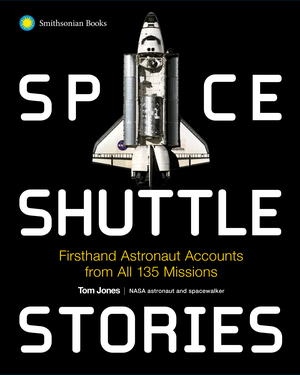Amazing Astronaut Stories From the Space Shuttle Program
Former astronaut Tom Jones interviewed more than 130 fellow astronauts to create a definitive oral history of the space shuttle program.
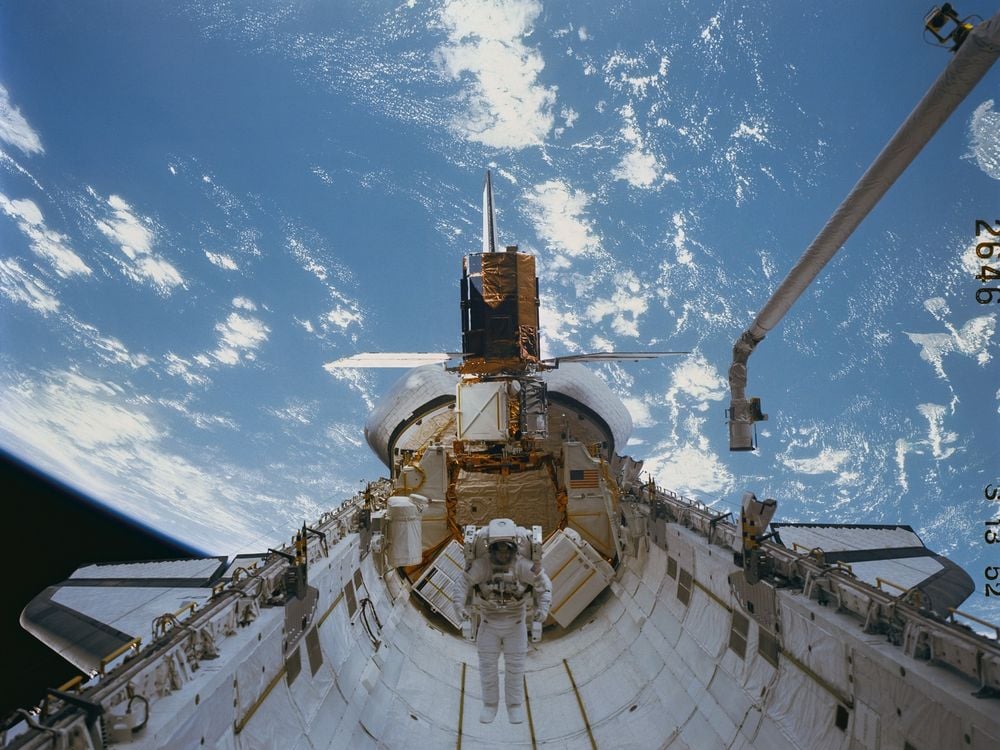
In his new book Space Shuttle Stories, former space shuttle astronaut Tom Jones compiled the personal anecdotes of astronauts from all 135 space shuttle missions that capture the joys, challenges, and camaraderie involved in space travel. Today, experience 5 of those missions as told by the astronauts themselves:
Mission no. 8 / STS-8
Orbiter: Challenger
Launch: August 30, 1983
Landing: September 5, 1983
Duration: 6 days, 1 hr., 8 mins., 43 secs
Crew: Richard H. Truly, Daniel C. Brandenstein, Guion S. “Guy” Bluford Jr., Dale A. Gardner, William E. Thornton
Mission: Challenger’s crew made the first shuttle night launch and landing, deployed the INSAT-1B communications satellite, and tested the Canadian RMS by maneuvering a 7,350-pound (3,333-kilogram) test satellite above the payload bay. Guy Bluford became the first African American to fly in space.
Guy Bluford, Mission Specialist:
There were three African Americans selected in the 1978 astronaut class. They included Major Fred Gregory, an Air Force test pilot; Ron McNair, a PhD physicist, and me. I was an Air Force combat fighter pilot and a PhD aerospace engineer. I flew in space four times, Ron flew once and was killed on his second spaceflight in the Challenger accident, and Fred flew three times in space and became the first African American to command a spacecraft.
STS-8 attracted a lot of public attention. Our primary payload was the Indian weather and communication satellite called INSAT-1B, which was going to be put in a geosynchronous orbit above the equator over the Indian Ocean. In order to reach the targeted deployment point on time and inject the satellite into its ultimate orbit, we had to launch the space shuttle at night.The first surprise on liftoff was the amount of light generated by the SRBs. We had darkened the cockpit in order to maintain our night vision, just in case we had to make an emergency landing at Kennedy Space Center. The cockpit was lit up like daylight as we rose off the pad and rotated to go down range. It looked like we were inside a fireball with the bright glow flooding through the windows. Our 500-foot-(152-meter) long fiery tail could be seen as far as 170 miles (273 kilometers) away in Fort Myers and 220 miles (354 kilometers) away in Miami.
The ride up on the SRBs and the three main engines of the shuttle was thrilling—very noisy and bumpy as the G-forces increased to about 2.5 g’s, like we were driving a pickup truck over railroad ties. I remember thinking: “This thing moves! Like riding the simulator but it moves!” The next surprise was the brilliant flash of light just after two minutes from the firing of the pyros at SRB separation. This was not modeled in the simulator.It took me several hours to get my “space legs” as I floated clumsily around the cockpit. Once in orbit, I had lunch and was ready to go to work. As part of Bill Thornton’s studies, I found that due to zero-g, I was almost two inches (five centimeters) taller in space, and both of my thighs were one inch (two and a half centimeters) thinner due to the fluid shift in my body.
The crew operated the Canadian robotic arm with a large payload attached and put the middeck electrophoresis experiment through its paces. We gathered data on human adaptation to microgravity and were ready after six days for a night landing at Edwards Air Force Base.
After the deorbit burn, we maneuvered Challenger to the reentry attitude over Australia. As we descended, the hot plasma glow surrounding us became a 3,000- degree Fahrenheit (1,649-degree Celsius) blowtorch that danced off the nose and upper sides of the orbiter. At 50,000 feet (15,240 meters), Dick Truly took manual control and flew us in a wide sweeping turn to line up on final descent, diving towards the end of the runway. For ground observers, the only indication of our arrival was the double sonic boom created by Challenger as we circled over Edwards, followed by our sudden appearance in the floodlights as we crossed the runway threshold for a smooth landing.
Mission no. 81 / STS-81
Orbiter: Atlantis
Launch: January 12, 1997
Landing: January 22, 1997
Duration: 10 days, 4 hrs., 55 mins., 21 secs.
Crew: Michael A. Baker, Brent W. Jett Jr., John M. Grunsfeld, Marsha S. Ivins, Peter J. K. “Jeff ” Wisoff, Up to ISS: Jerry M. Linenger, Down from ISS: John M. Blaha
Mission: Atlantis’s astronauts docked with Mir, swapped Jerry Linenger for John Blaha, and transferred nearly 6,000 pounds (2,722 kilograms) of water, US science equipment, and Russian equipment. About 2,400 pounds (1,089 kilograms) of science samples, obsolete gear, and trash returned to Earth in SPACEHAB.
Marsha Ivins, Mission Specialist:
STS-81 was the first time I watched us approach another spacecraft in space. We had completed the final rendezvous burn in the dark, and when we hit sunrise suddenly there was this big thing out there in front of us, getting closer. It didn’t feel normal, not at all like formation flying in an airplane. When we pulled up into Mir, we literally had solar arrays and pieces of Mir on either side of us, down where I had the feeling that they shouldn’t be.
I realized that our slow approach to Mir was just relative motion, but somewhere in the back of my head, I was hearing, “That thing is going 17,500 miles (28,164 kilometers) per fricking hour!” Think about that! I was stunned, as I was again on STS-98, by how smoothly and elegantly this boat of a space shuttle performed the rendezvous maneuver.
John came back with us, and we left Jerry up there. They were both transfer items on my stowage list. I don’t know if we were the first Mir crew to list the astronauts that way, but every crew after us would have the transfer astronaut as a line item on the cargo list.The cosmonauts said to us, “Come over anytime.” Well, I went wandering over one day, and one of the guys was bathing— completely naked! I turned around and slunk off in another direction, thinking, “Okay, you actually meant ‘Come over any time— unless you’re a woman.’” I always knocked after that. The first time Valery Korzun, the Mir commander, came over to the shuttle, I had just washed my hair and it was all out in a ball. He came over, saw me, and said, “Ahhh!” He turned around, flew back to Mir, and came back with a camera: “Take picture!”
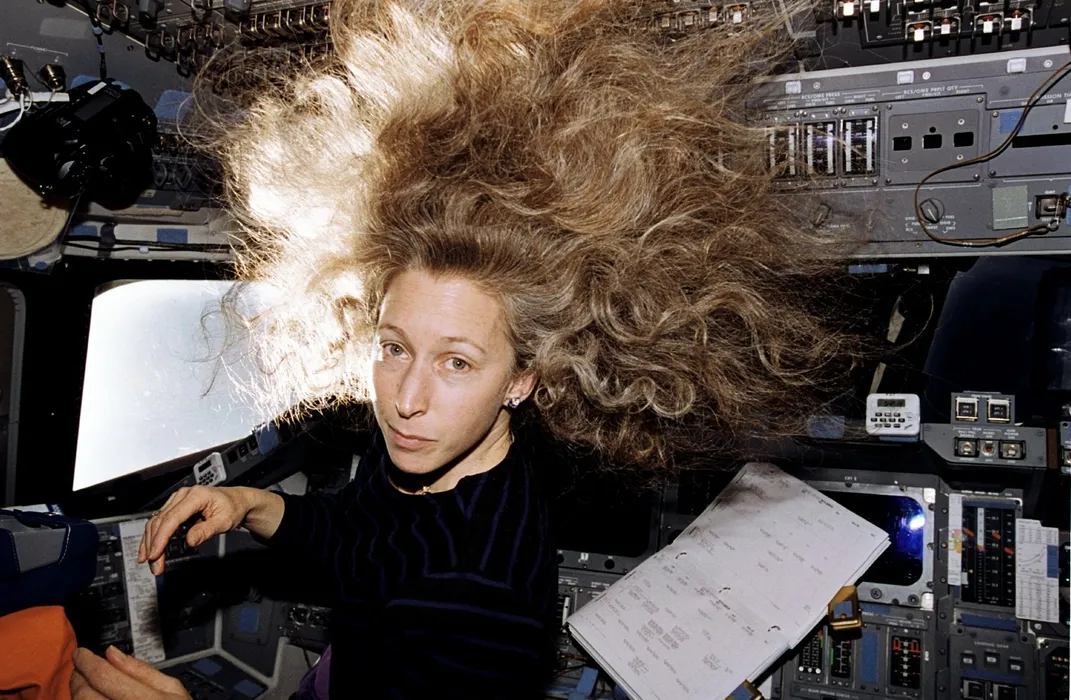
I was taking video in the Kvant module, where they staged all their old gear. It’s also the berthing point for the Progress supply ship. The stuff in Progress was bolted down, and to get to it, they had to unscrew metal brackets. Valery was looking for something in there, and it sounded like a cat fight inside some trash cans. Out he came, and he had a syringe stuck to him on one side and stains on the other sleeve, but he’d found whatever it was he was looking for. Aye-yi-yi! We had all our clean, precise standards for shuttle: If we flew a bag of Wheat Thins, we’d have them stacked flat with all the corners precisely aligned. Meanwhile, a cat fight in trash cans was what was happening on Mir.
The Russians intentionally ran with higher CO2 levels than we do. When we did our air-to-ground TV interviews in the Base Block, the air in there for three people was now being sucked up by ten. Our instructions were, “Grab your oxygen molecule early, because you’re going to need it!” We had the TV lights on and were doing the event, and I started falling asleep. By coincidence a master alarm sounded, coming from the shuttle, and Brent and I went zorching down into the orbiter to take care of it. Turned out to be a nuisance alarm, but entering the shuttle airlock from Mir made a noticeable difference—literally a breath of fresh air.
I was pleased at how well we got along with the Russians. When training with a Russian crew, we were limited to the five days we spent in Star City. Not much time. We paid a lot of attention to what previous Mir crews had said about what worked and didn’t work.
Mission no. 127 / STS-127
Orbiter: Endeavour
Launch: July 15, 2009
Landing: July 31, 2009
Duration: 15 days, 16 hrs., 44 mins., 58 secs.
Crew: Mark L. Polansky, Douglas G. Hurley, Christopher J. Cassidy, Julie Payette, Thomas H. Marshburn, David A. Wolf
- Up to the ISS: Timothy L. Kopra
- Down from the ISS: Koichi Wakata
Mission: Hydrogen leaks and bad weather postponed STS-127’s launch five times. The mission exchanged Tim Kopra for Koichi Wakata. Endeavour’s astronauts attached the JEM Exposed Facility to Kibo’s port side, and spacewalkers replaced P6 battery modules. The thirteen astronauts working aboard the ISS formed the largest single-spaceship crew to date.
With the multiple robotic operations and five EVAs, the sixteen-day STS-127 mission was among the most complex shuttle missions ever flown. So many things have to go right on these intricate, choreographed missions—whether the Hubble-repair missions or that sequence of heavy, Station-assembly missions in the mid-2000s—that people may not realize just how many chances for failure there were. In delivering and assembling major pieces of the Space Station that were never put together on the ground, so many things had to go right to be successful. Most of these assembly missions had at least three or four highly choreographed spacewalks, and a couple had five EVAs. Going out the door five times over the course of ten days or less is unprecedented.
I won’t say that the Apollo missions were easy, but if you compare the timelines for guys going to the Moon with those of these assembly or Hubble missions, you can see that they are comparable in complexity. Success in both types of missions required people to be in sync and equipment to work. There was little room for error.
After ascent on STS-127, when the engines cut off, we went from three g’s to zero g’s, and I was floating, hanging in my straps, looking out the window. I was struck by all those years that had gone into getting me to that point—not to mention the fact we’d scrubbed five times. I’m sure my facial expression as I looked at Mark Polansky was “What the hell just happened?” Mark looked back at me and said, “Are you with me, dude?”
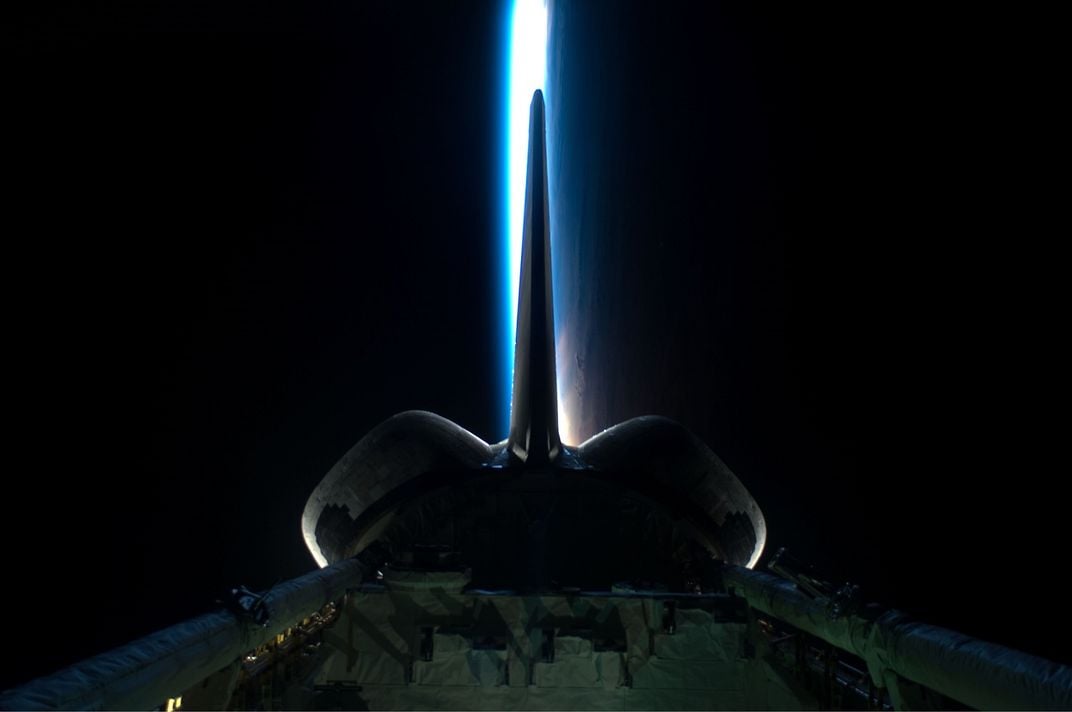
Courtesy of NASA
Being the flight engineer was phenomenal because I was right in the middle of the action, seated on the center Mission Specialist 2 seat behind the pilots, with the overhead windows behind me. I wondered if I’d see flame shoot out behind us at takeoff. Chris Cassidy was sitting to my right in the Mission Specialist 1 seat, holding a mirror so we could see. I will never forget the moment when the engines lit: In a flash, I saw this boulevard of flame below us; the flame trench was just a mass of bright orange fire. Then we took off, and of course I had to concentrate on something else.
Once docked at the ISS, we used the Station’s Canadarm2 to reach out to the batteries at the very end of the P6 truss. Those batteries are massive, and the EVA crew had to go on the carrier platform to retrieve a spent battery and replace it with a fresh one. Because the arm was so fully extended, every single time they’d get on or off the platform, the arm would start flexing, swinging dangerously close to Station structure. And every time that arm started to swivel, I got a little scared; we engaged the brakes on the arm joints and quickly floated down to the Kibo module porthole where we were able to see the actual distance between the tip of the arm carrying the battery platform and the very end of the Station structure. It was close. We continued, but asked the guys to be careful.
STS-127 was a very nononsense, “let’s get the job done” flight. Our joint crew at the Station represented all five international partners. Because of this close cooperation, the ISS will go down in history as a formidable example of an effective foreign policy. It forced nations to work together, to think not from the microcosm of nationality, but as partners in a peaceful, collaborative spirit.
Mission no. 128 / STS-128
Orbiter: Discovery
Launch: August 28, 2009
Landing: September 11, 2009
Duration: 13 days, 20 hrs., 53 mins., 43 secs.
Mission: STS-128 exchanged Nicole Stott for Tim Kopra. Discovery’s crew berthed the Leonardo MPLM to Harmony and transferred 15,200 pounds (6,894 kilograms) of equipment to the ISS. Spacewalkers installed a fresh ammonia tank, returned exposed experiments to the shuttle, and prepared connections for the future Tranquility module.
José Hernández, Mission Specialist
We were nearing completion of the assembly of the ISS, and our mission brought seven tons (6.4 metric tons) of equipment to install both inside and outside. On a big construction project, you’ve got people who do the framing, others who do the roofing, still others for the drywalling—all those tasks. I felt that we were the movers, bringing up and installing experiment racks, cameras, antennas, and a spare ammonia tank assembly for the outside. It was a busy time at the ISS.
I was impressed that NASA was able to put together the ISS, LEGO-style, module by module. We’d bring in a module, berth it, hook up its electrical lines and cooling loops, and just keep building.
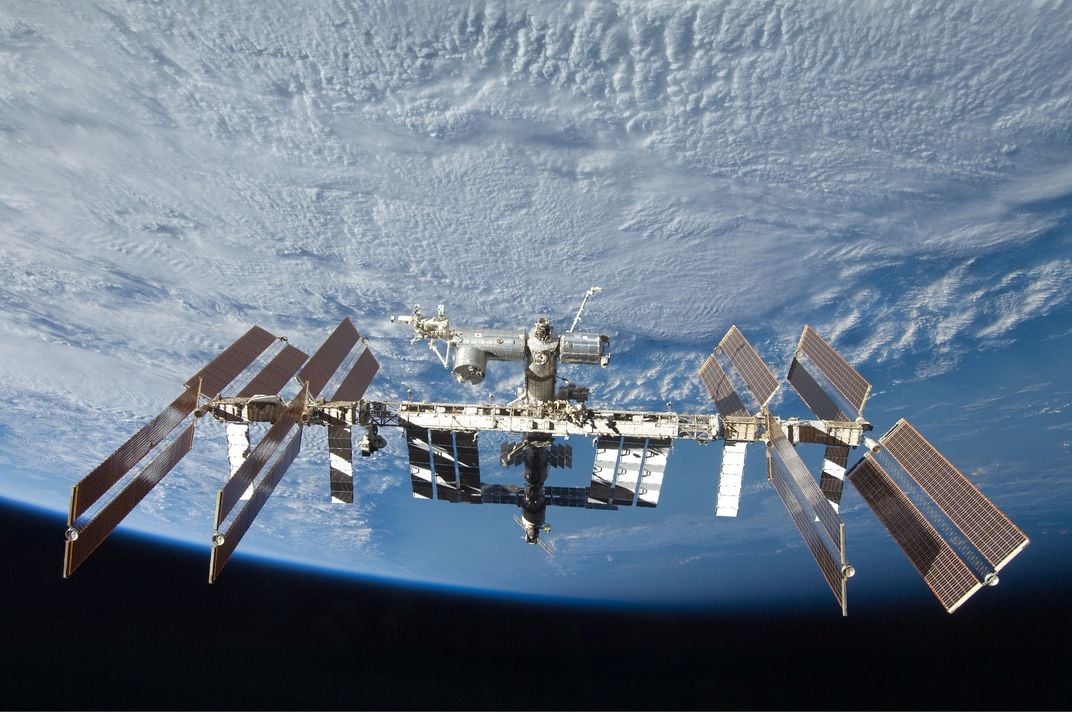
One maintenance task we practiced more times than I thought necessary was changing the shuttle cabin’s lithium hydroxide— LiOH—canisters; they scrub CO2 from the atmosphere. You undo four screws, take out the floor panel, remove the filter, put in the new one, and reinstall the panel, right? You practice it once, you know where the tools are, and you know how to unscrew the fasteners. It’s righty-tighty, lefty-loosey. A monkey can do it, right?
I was the first one to replace a LiOH canister. “No problem. I’m just going to float over and get the tool. I’m going to float now, hovering over the panel. Yeah, there’s the four screws, just like in training.” I tried to loosen a screw. Well, Newton’s third law of motion kicked in: “For every action, there’s an equal and opposite reaction.” So, as I turned the screw one way, my body turned the other way. I was kind of embarrassed—I looked around, checking that no one was looking at me. I scratched my head there for a while, trying to not look so obviously stumped. Of course, we were in zero g, and I wasn’t anchored to anything. I finally saw some gray tape on the floor, peeled it up, and sure enough, there were a couple of foot loops held there under the tape. I put my feet in the loop, anchored myself, and away I went.
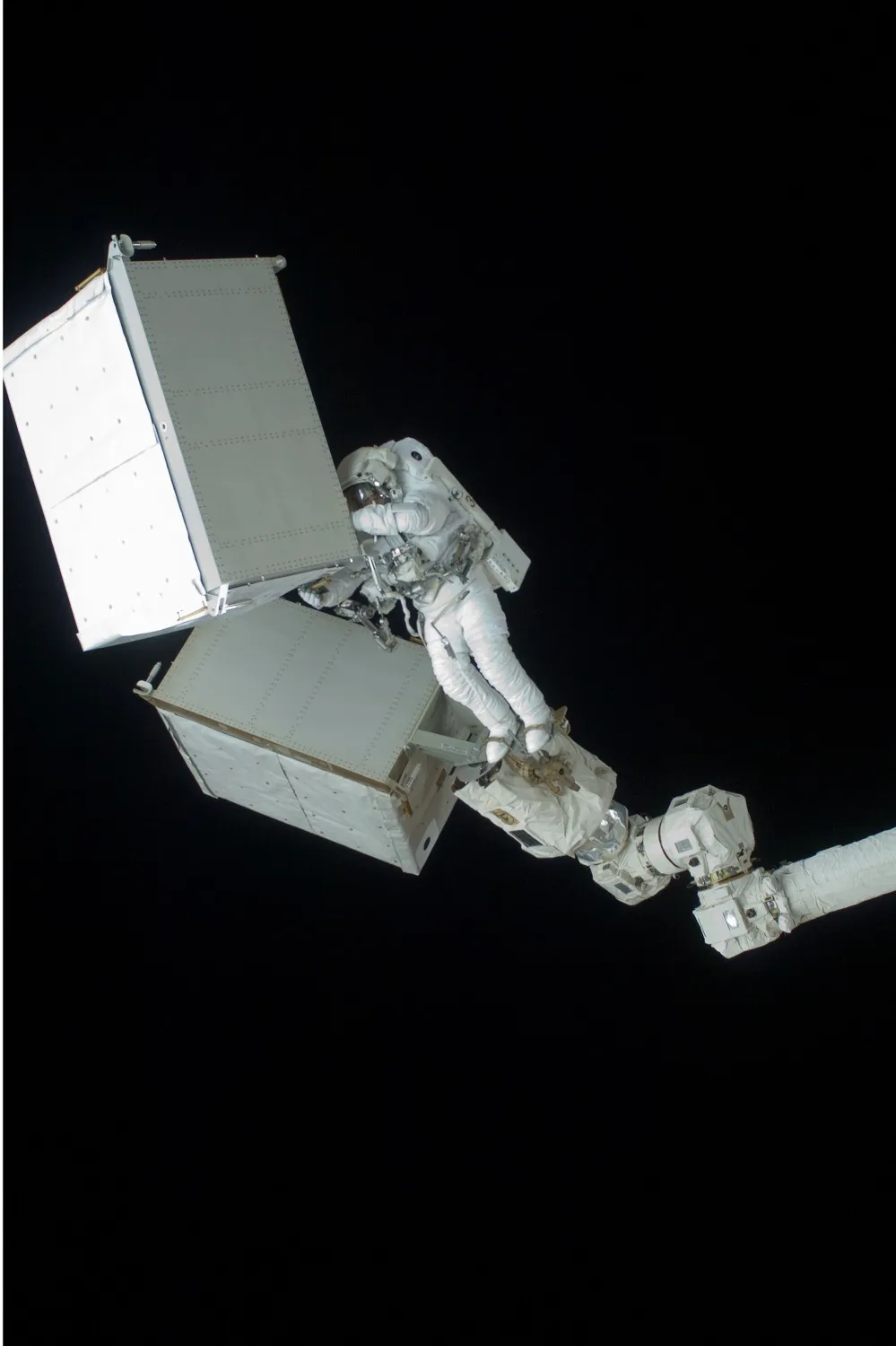
When I got home, the first thing I did was go to the mockup. Sure enough, the gray tape was there. I called the trainers together, and said, “Okay, I suppose you guys didn’t tell us about this.” They all started laughing: “We get the rookies all the time!” They didn’t tell us because they wanted to let us figure it out in orbit, and then when we came back to complain, they would enjoy a good laugh at my expense.
We were up fourteen days, and we each got to choose wake-up songs. My first one was a traditional Mexican song, “Son of the Town,” by a famous Mexican artist who was popular during my father’s time. It’s about coming from humble beginnings and doing good things. I chose it as an homage to my father.
Florida’s weather was bad on the day we were supposed to land. Our families were waiting for us there to watch the landing, but we had to divert to Edwards Air Force Base. Reentry was anticlimactic, just a lot of buffeting, equivalent to a bad airline flight over the Rockies. Gravity started taking hold, so my neck felt weak under that big helmet. But about an hour and a half after we stepped off the orbiter, we were on our way to dinner at Domingo’s.
Mission no. 30 / STS-28R
Orbiter: Discovery
Launch: August 8, 1989
Landing: August 13, 1989
Duration: 5 days, 1 hr., 0 mins., 9 secs.
Mission: Columbia’s DOD payload is still classified. A middeck locker carried a human skull studded with dosimeters to record radiation dosage at orbital altitude. During reentry, an infrared camera mounted on the tip of the tail measured temperatures on the orbiter’s port wing and tail.
Jim Adamson, Mission Specialist:
When Challenger happened, about half a dozen payloads that could only go on the shuttle had accumulated and stayed grounded during the suspension of operations post-accident. After we started up again in 1988, NASA was trying to fly off these satellites that could not go out another way. All these DOD flights were part of a process to launch payloads that the country really wanted to get into space.We had two national security assets that were among the most significant of any in the Cold War, and yet to this day we’re not free to talk about them. It was truly amazing technology for that time. Today we’ve advanced way beyond what was possible then, but for those times it was just incredible what those things could see and do in orbit. I was gobsmacked at the capability that we had in our country that I never knew about.
Our crew was named to fly right after Challenger—we were originally scheduled for March 1986. All of us were military, but I was the only Army guy. Brewster Shaw and Mark Brown were Air Force, and Dave Leestma and Dick Richards were Navy. We had an interesting crew because we were all from similar backgrounds and were together a long time, so by the time we were ready to fly we felt like five fingers on the same hand. We were the closest crew I’ve ever been a part of and even observed at NASA.
The secondary job of this mission was a whole list of military objectives aimed at Earth observation. This turned out to be one of the most satisfying parts of the mission for all of us, because it was actually our job to stare at Earth and take a lot of photographs. We had some impressive DOD optics tools onboard to play with.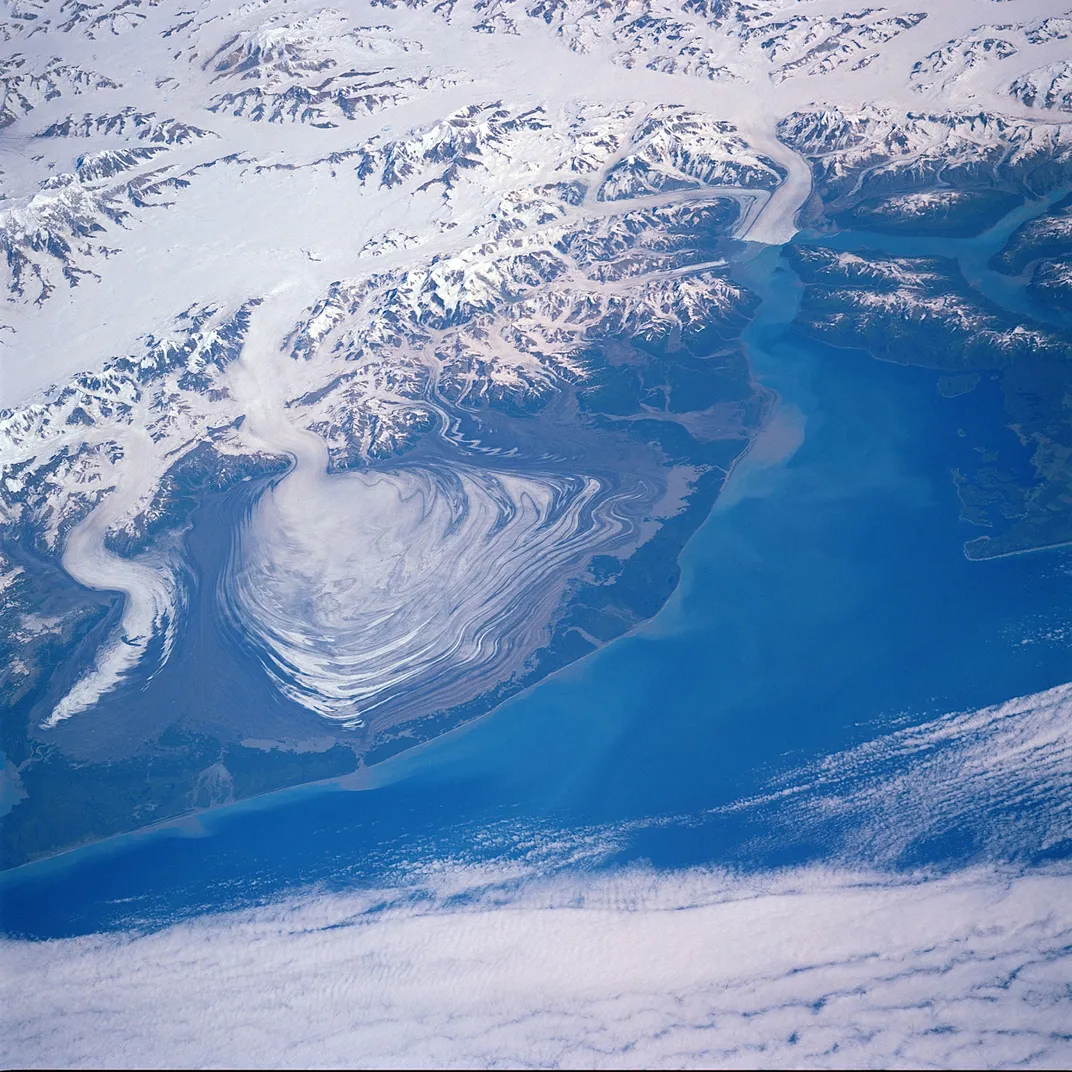
I think the question of what value humans afford in space is still one that we don’t have a great answer for. I think there is, though, some power that human beings have to process information in real time, and to collect valuable knowledge and act on it. I think that’s why humans ought to explore, to participate in going to the Moon, Mars, and beyond.
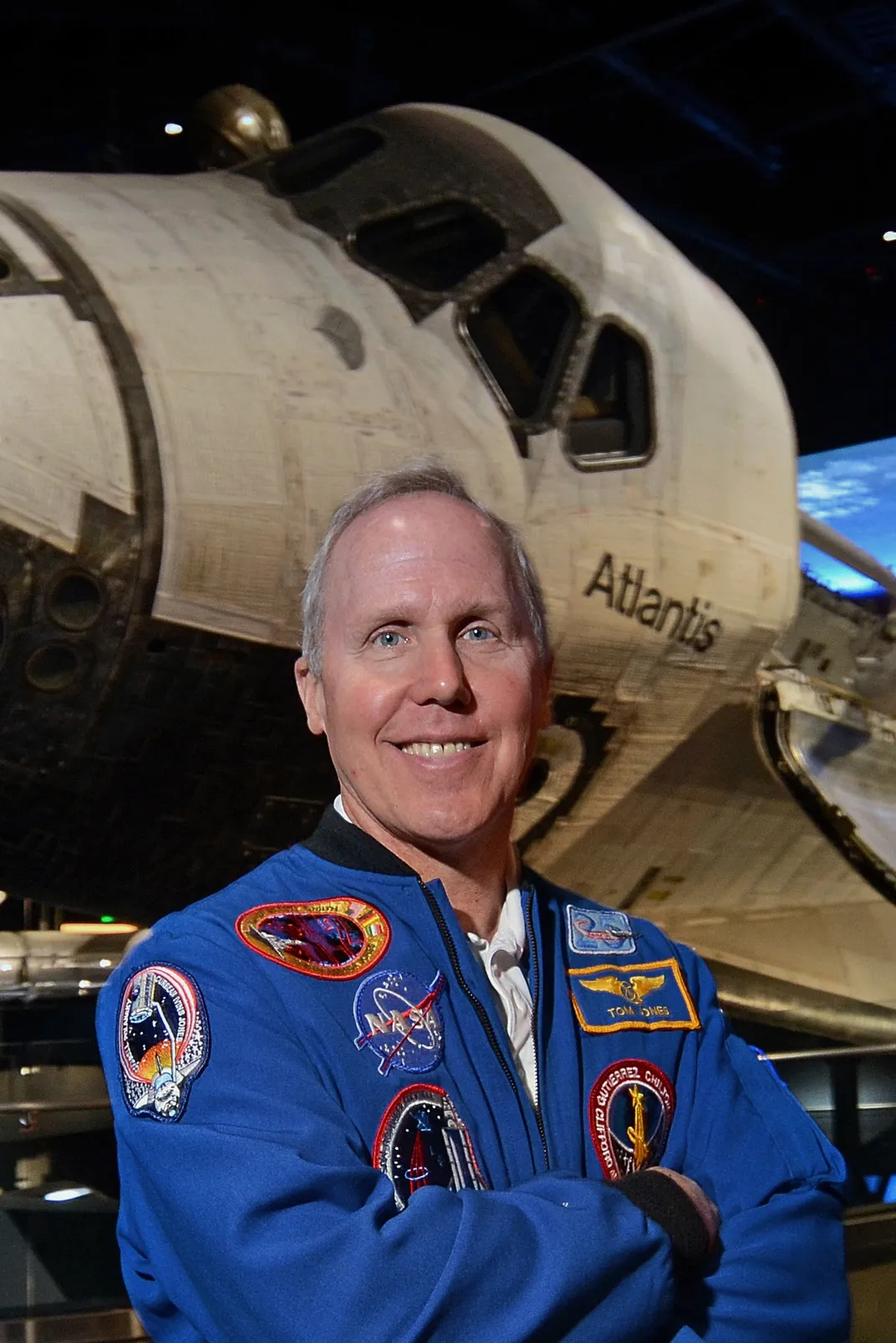
Read more astronaut narratives in Space Shuttle Stories: Firsthand Astronaut Accounts from All 135 Missions, available from Smithsonian Books. Visit Smithsonian Books’ website to learn more about its publications and a full list of titles.
Excerpt from Space Shuttle Stories © 2023 by Tom Jones

